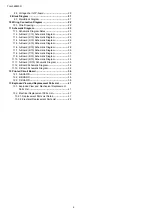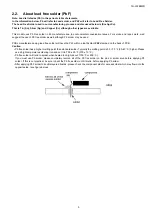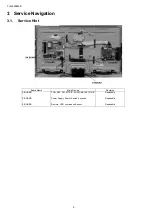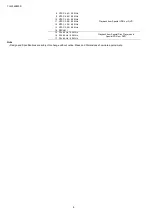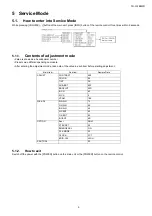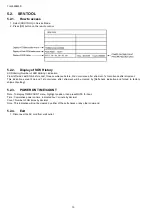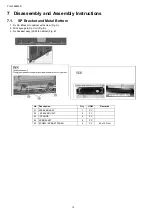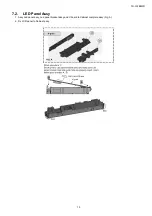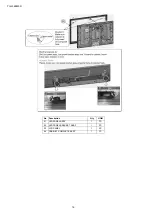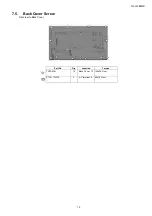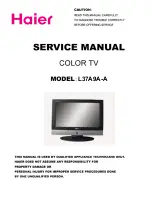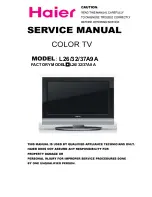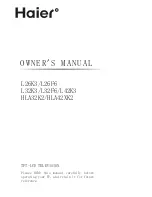
TH-L32EM5
D
5
2.2.
About lead free solder (PbF)
Note: Lead is listed as (Pb) in the periodic table of elements.
In the information below, Pb will refer to Lead solder, and PbF will refer to Lead Free Solder.
The Lead Free Solder used in our manufacturing process and discussed below is (Sn+Ag+Cu).
That is Tin (Sn), Silver (Ag) and Copper (Cu) although other types are available.
This model uses Pb Free solder in it’s manufacture due to environmental conservation issues. For service and repair work, we’d
suggest the use of Pb free solder as well, although Pb solder may be used.
PCBs manufactured using lead free solder will have the PbF within a leaf Symbol
PbF
stamped on the back of PCB.
Caution
• Pb free solder has a higher melting point than standard solder. Typically the melting point is 50 ~ 70
°
F (30~40
°
C) higher. Please
use a high temperature soldering iron and set it to 700 ± 20
°
F (370 ± 10
°
C).
• Pb free solder will tend to splash when heated too high (about 1100
°
F or 600
°
C).
If you must use Pb solder, please completely remove all of the Pb free solder on the pins or solder area before applying Pb
solder. If this is not practical, be sure to heat the Pb free solder until it melts, before applying Pb solder.
• After applying PbF solder to double layered boards, please check the component side for excess solder which may flow onto the
opposite side. (see figure below)
Summary of Contents for TH-L32EM5D
Page 23: ...TH L32EM5D 23 11 Schematic Diagram 11 1 Schematic Diagram Notes ...
Page 34: ...TH L32EM5D 34 11 12 K Board Schematic Diagram 6 5 4 3 2 1 A B C D E F G H I ...
Page 35: ...TH L32EM5D 35 11 13 P Board Schematic Diagram 6 5 4 3 2 1 A B C D E F G H I ...
Page 50: ...Model No TH L32EM5D Parts Location ...


